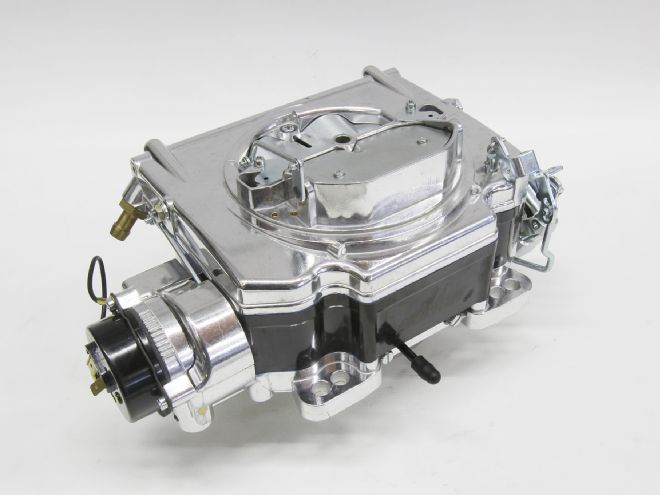
When electronic fuel injection first burst on the scene around 25 years ago, many predicted the demise of the carburetor. Yet carburetors have maintained their stature in the performance world and new versions continue to appear. Demon Carburetors recently began offering a new carburetor called the Street Demon. One of the advantages with starting with a clean sheet of paper carburetor is that you can take advantage of many excellent engineering ideas that have come before.
The Street Demon series includes 625- and 750-cfm sizes in three versions for each size. The most interesting is perhaps the polymer variation using an aerospace composite material for the centersection that is intended to reduce heat transfer into the fuel bowl to keep the fuel from percolating during hot summer operation. All three Street Demon versions come standard with an electric choke and the mechanical secondary is adjustable using a spring-loaded upper air valve door. This makes adjusting the secondary much easier and requires no additional parts.
We chose to investigate the 750-cfm version (PN 1904) but all the Demon carburetors share the same features. One distinct advantage is that the Demon incorporates both square and spread bore mounting flange boltholes so it will fit on nearly any four-barrel intake. It is a single fuel inlet carburetor but it has a rather large fuel reservoir with twin floats and matching needles and seats. This means the Demon has plenty of fuel capacity and not limited in fuel flow capacity like other single needle and seat carburetors, such as the Quadrajet. Unlike modular carburetors, the fuel is located below the upper lid gasket line so there are no gaskets below the fuel level to leak. You'll also notice the Demon's very smooth external appearance. The majority of the fasteners are accessed from underneath the carburetor along with two small Phillips screws in the top. This is perhaps our only criticism of this design in that the carburetor must be removed from the engine for disassembly. On the plus side, the primary metering rods and springs (which are among the most commonly accessed tuning parts) can be easily accessed on top along with the accelerator pump nozzle and lever.
I have some experience with a 625-cfm version of the Street Demon on a street-driven small-block Chevy. The engine was equipped with a long duration cam with lots of overlap and suffered from an off-idle stumble that was difficult to eliminate. After some minor accelerator pump tuning, we were able to dramatically improve, but not eliminate the off-idle stumble. Compared to previous attempts it was much improved and significantly easier to pull away from stop lights with light throttle. I attribute this mainly to the Street Demon's smaller primary throttle bores and triple-stack boosters that appear to be more sensitive to airflow and changes in throttle opening.
Overall, I found this carburetor to have excellent part-throttle response and good metering characteristics and would make a great street carburetor for street rod applications.
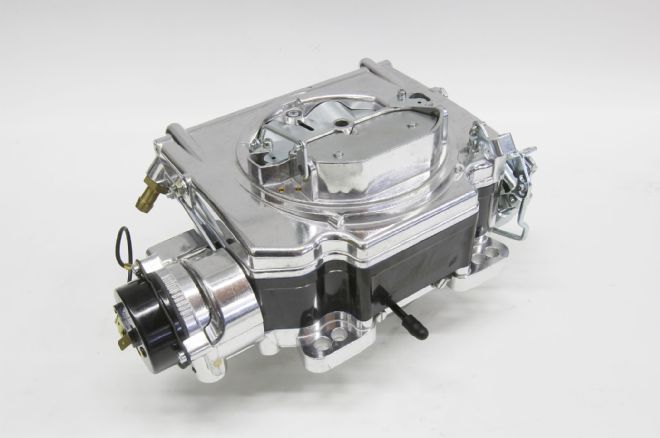
The Street Demon comes in two sizes, 625 and 750 cfm. This particular variation includes the polymer fuel bowl option. There are also ball burnished aluminum and fully polished versions in both sizes. Note the multiple bolt patterns that permit the Demon to be used on either a standard square Holley flange or the Quadrajet style spread-bore pattern.
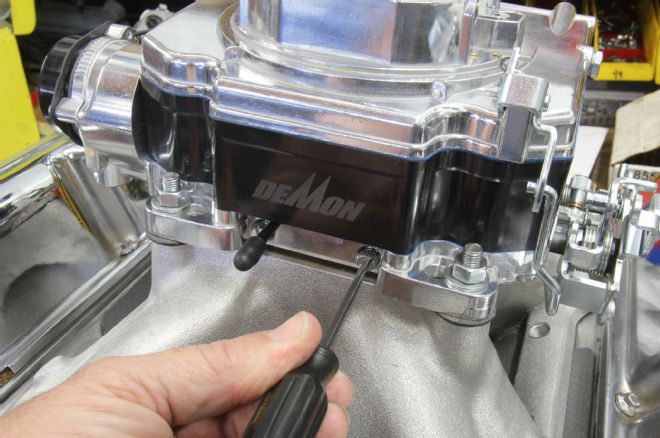
The idle mixture screws are located conveniently in the front of the carburetor. The small vacuum outlet is the ported manifold vacuum connection most often used for the vacuum advance canister on the distributor. There are two more full manifold vacuum outlets on the back side of the base plate and a threaded plug that can be removed and used, if required.
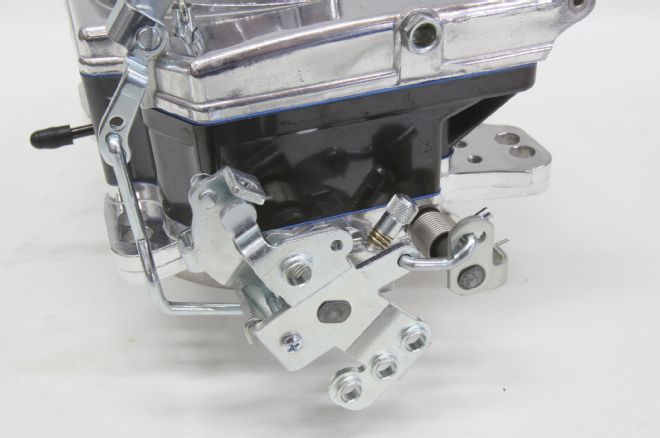
On the linkage side, Demon created a simple knurled idle speed screw that can easily be adjusted with your fingers. The linkage also offers easy kickdown linkage mounting. The front hole (far left) is for a TH350 kickdown cable while the middle hole is configured for 700-R4 and 200-4R TV cable positions. The rearmost hole is a convenient location for a throttle return spring.
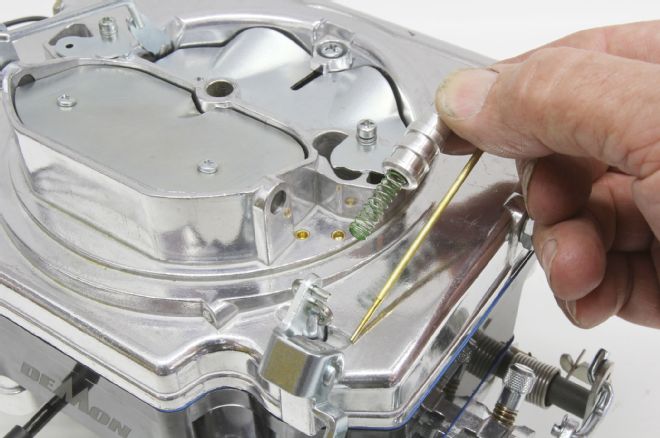
The primary metering circuit uses an easy-access metering rod and power valvespring. Under light load, manifold vacuum pulls the tapered metering rod deeper into the primary jet. As the throttle opens, vacuum drops and the calibrated spring pushes the metering rod out of the jet, increasing the fuel flow. The springs and metering rods can be easily changed to tune part-throttle metering. Demon offers five different power valvesprings and multiple metering rods. This creates the potential for closer tolerance part throttle metering.
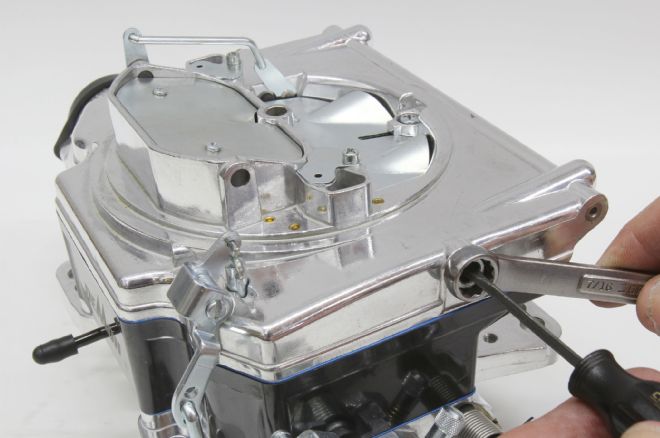
The secondary air valve is also easily adjusted if needed to change its opening rate. Loosening the 7/16-inch lock nut allows changes to the preload spring with a straight-blade screwdriver. A counterclockwise turn increases spring tension and slows the air valve door-opening rate. Most often, the factory setting rarely demands modification.
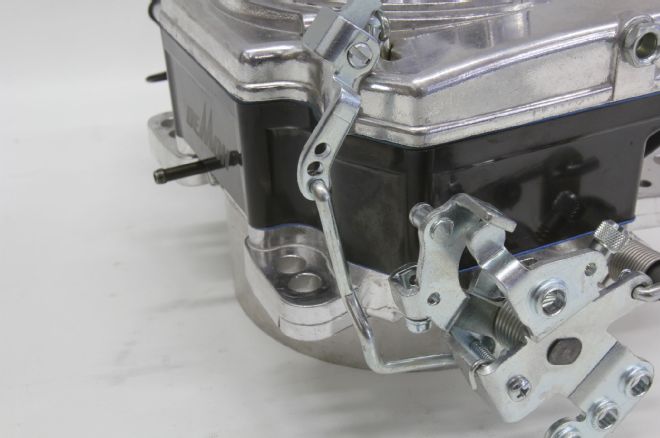
The external accelerator linkage offers three different options. The lowest hole offers the slowest discharge rate while the top hole creates the quickest rate. Just simply changing the discharge rate can often cure a minor off-idle stumble.
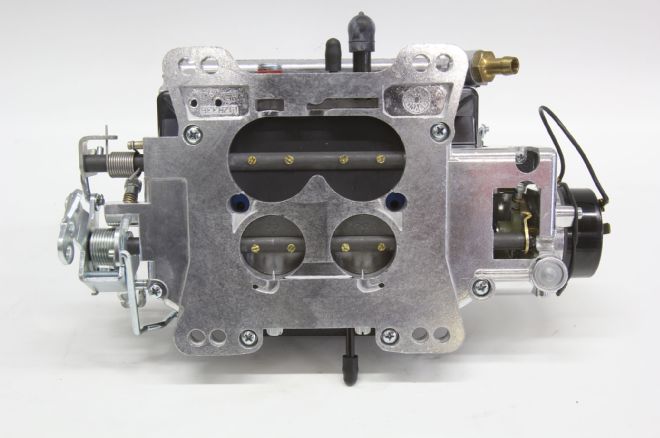
The small primaries give this carburetor excellent part-throttle responsiveness. Also notice what Demon calls its Goggle Valve Secondary (GVS). The secondary is actually one large valve that flows more air and fuel compared to two individual round valves.
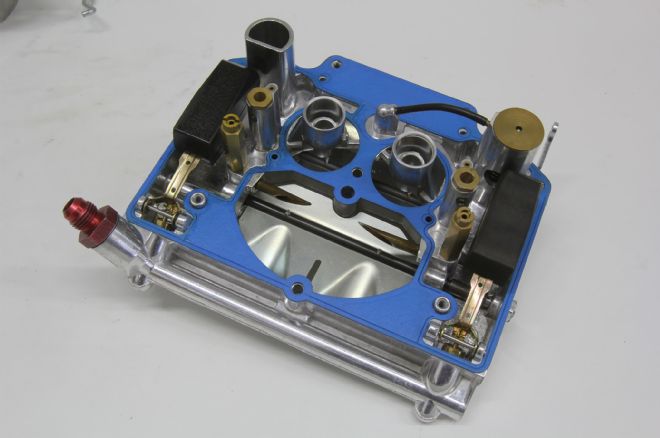
Removing the top of the carburetor requires removing two lid and six base plate screws. The lid must be removed in order to make changes to the secondary jetting. The arrows point to the Holley-style secondary metering jets.
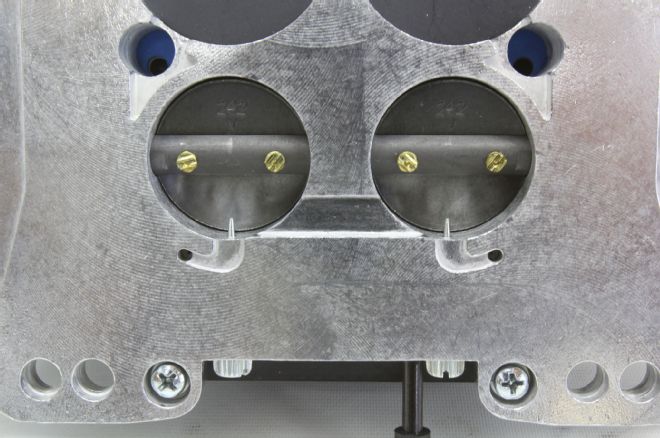
Demon engineers tell us those small channels leading to the idle mixture outlets introduce a measured amount of air that shears the fuel exiting the idle mixture needles. This tends to enhance mixture of fuel and air into the intake manifold and may offer a small advantage where the engine might idle better at a leaner air/fuel ratio.
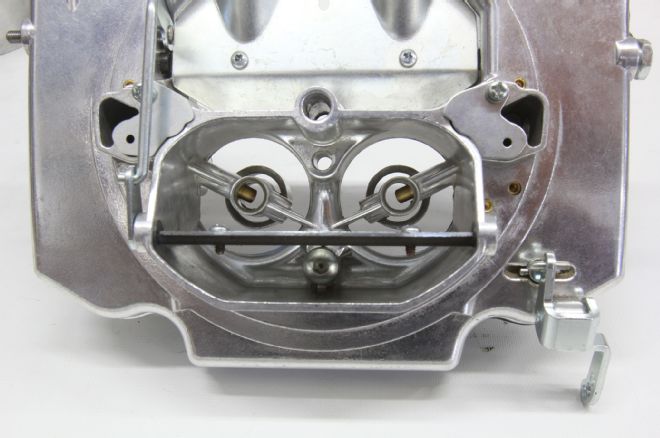
This photo shows what Demon calls the Triple Stack Boosters. These enhance part throttle fuel and make the carburetor very responsive to even small primary throttle changes.